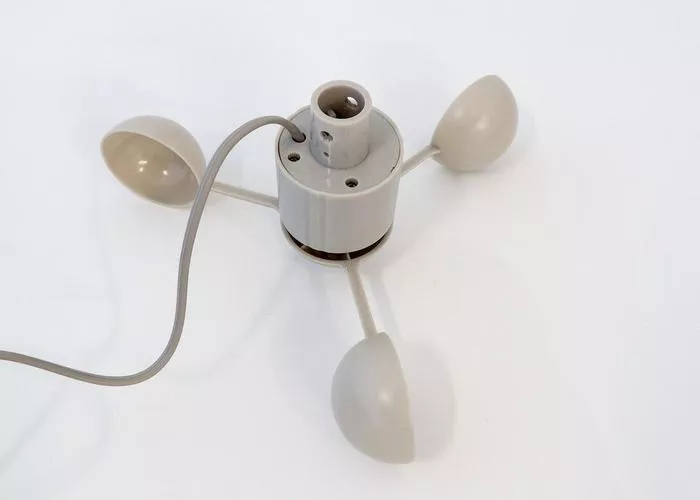In various industries and scientific applications, the measurement of airflow plays a crucial role in ensuring efficiency, safety, and optimal performance. One of the most widely used instruments for measuring airflow velocity is the thermal anemometer. This sophisticated device relies on heat transfer principles to provide accurate and real-time velocity measurements, making it a valuable tool in numerous engineering and research fields.
This article will explore the concept of a thermal anemometer, its working principles, components, advantages, applications, and limitations. By the end, you will have a comprehensive understanding of how thermal anemometers function and why they are an essential part of fluid dynamics analysis.
What is a Thermal Anemometer?
A thermal anemometer, also known as a hot-wire anemometer or hot-film anemometer, is a device designed to measure the velocity of air or gas flow. Unlike conventional mechanical anemometers that rely on rotating vanes or pressure differentials, thermal anemometers use temperature-based sensors to determine the speed of moving air.
Thermal anemometers are extensively used in aerodynamics, HVAC (heating, ventilation, and air conditioning) systems, environmental monitoring, and industrial airflow measurements. Their ability to provide precise and instantaneous readings makes them a preferred choice over traditional methods.
How Does a Thermal Anemometer Work
The fundamental principle behind a thermal anemometer is heat transfer due to forced convection. The device typically consists of a fine wire or thin film element, which is electrically heated. As air or gas flows past this heated element, it carries away some of the heat, causing a change in temperature. The rate at which the heat is lost depends on the velocity of the airflow.
There are two main methods used to measure airflow velocity with a thermal anemometer:
1. Constant Current Anemometry (CCA)
In this method, a constant electric current is supplied to the heating element, maintaining a steady heat input. As airflow increases, more heat is removed, leading to a drop in temperature. The change in resistance of the heating element due to the temperature variation is measured and correlated with the airflow velocity.
2. Constant Temperature Anemometry (CTA)
This is the most commonly used method in modern thermal anemometers. Here, the temperature of the heating element is kept constant by continuously adjusting the electric current. The amount of current required to maintain the set temperature is directly proportional to the velocity of the airflow. By monitoring these current changes, the airflow velocity can be determined with high accuracy.
Components of a Thermal Anemometer
A typical thermal anemometer consists of the following key components:
Sensing Element (Hot Wire or Hot Film): A fine platinum, tungsten, or nickel wire (or a thin film) serves as the primary sensing component, which is heated electrically.
Temperature Control Circuit: Ensures that the temperature of the sensor remains constant in CTA mode or provides a steady current in CCA mode.
Wheatstone Bridge Circuit: Measures resistance variations due to temperature changes.
Amplifier and Signal Processing Unit: Converts electrical signals into readable airflow velocity data.
Display Unit: Shows real-time airflow readings, often in meters per second (m/s) or feet per minute (FPM).
Advantages of Thermal Anemometers
Thermal anemometers offer several advantages over traditional mechanical anemometers:
High Sensitivity: Can detect very low airflow velocities, making them suitable for delicate applications.
Quick Response Time: Provides real-time airflow data, which is crucial in dynamic environments.
Compact and Lightweight: Small sensing elements allow easy integration into various systems.
Non-Intrusive Measurement: Causes minimal disturbance to the flow field, ensuring accurate readings.
Wide Measuring Range: Can be used for both low and high-speed airflows.
Applications of Thermal Anemometers
Due to their precision and versatility, thermal anemometers are used in numerous fields, including:
Aerodynamics Research: Wind tunnel testing and airflow studies in aircraft design.
HVAC Systems: Monitoring and balancing air distribution in buildings.
Environmental Monitoring: Measuring wind speed and pollution dispersion.
Industrial Applications: Airflow measurement in ducts, pipes, and manufacturing processes.
Biomedical Applications: Measuring respiration rates and airflow in medical devices.
Electronics Cooling: Analyzing airflow for heat dissipation in electronic circuits and components.
Limitations of Thermal Anemometers
Despite their numerous benefits, thermal anemometers also have some limitations:
Sensitive to Contaminants: Dust and particles can affect sensor performance.
Calibration Requirement: Frequent calibration is necessary to maintain accuracy.
Fragile Sensors: Thin wires or films can be delicate and prone to damage.
Affected by Temperature Variations: Changes in ambient temperature may influence readings.
Conclusion
Thermal anemometers are an essential tool for measuring airflow velocity in various engineering and scientific applications. By utilizing heat transfer principles, they offer high accuracy, quick response times, and the ability to detect very low air velocities. While they require careful handling and regular calibration, their benefits make them indispensable in industries such as aerospace, HVAC, and environmental sciences.
Understanding how thermal anemometers work and their applications can help engineers, researchers, and technicians optimize systems that depend on precise airflow measurements. With continuous advancements in sensor technology, thermal anemometers will remain a critical tool for fluid dynamics analysis and airflow monitoring in the years to come.

